Some of you reading this may be lucky enough to own one, or maybe even several Patek Philippe vide-poches dishes. These beautiful, trinket dishes are released once a year as an end-of-year Holiday gift for VIP clients and friends of the brand. Each year, a dish will feature a Patek Philippe timepiece, usually a decorated pocket watch from the Museum, and for any of us lucky enough to have received one, they are a welcome and treasured treat.
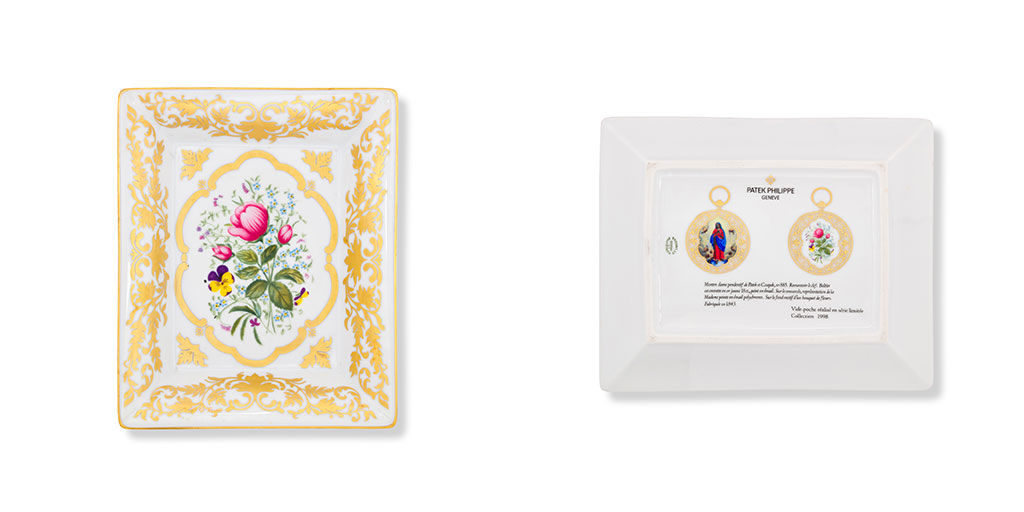
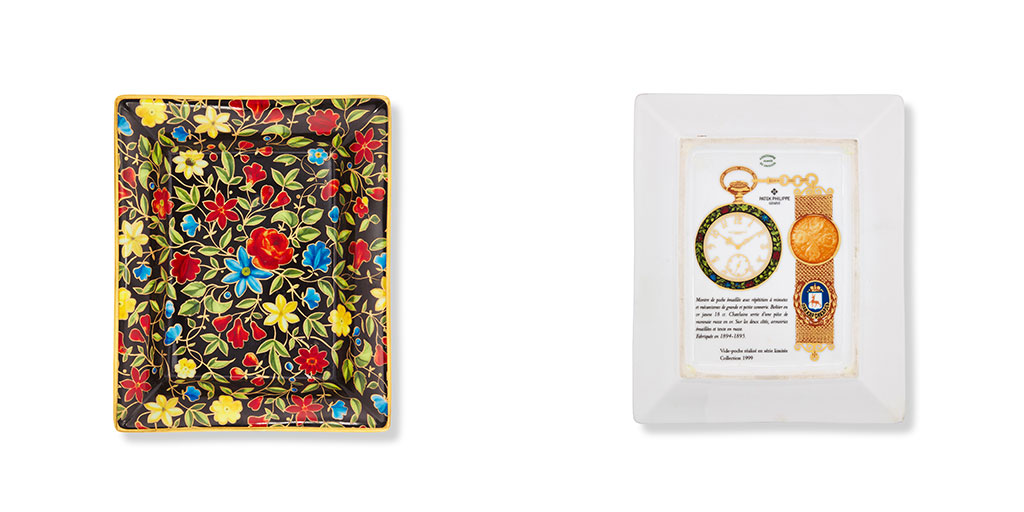
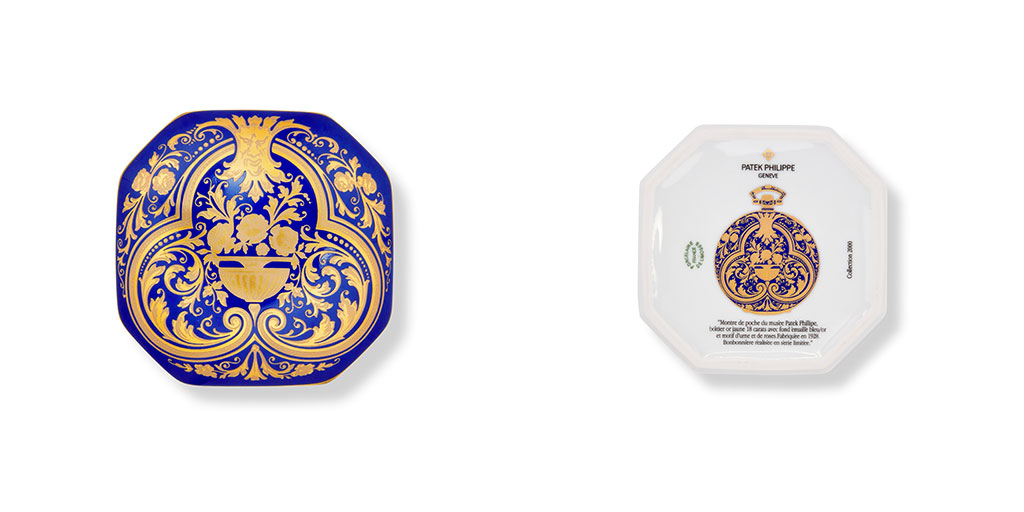
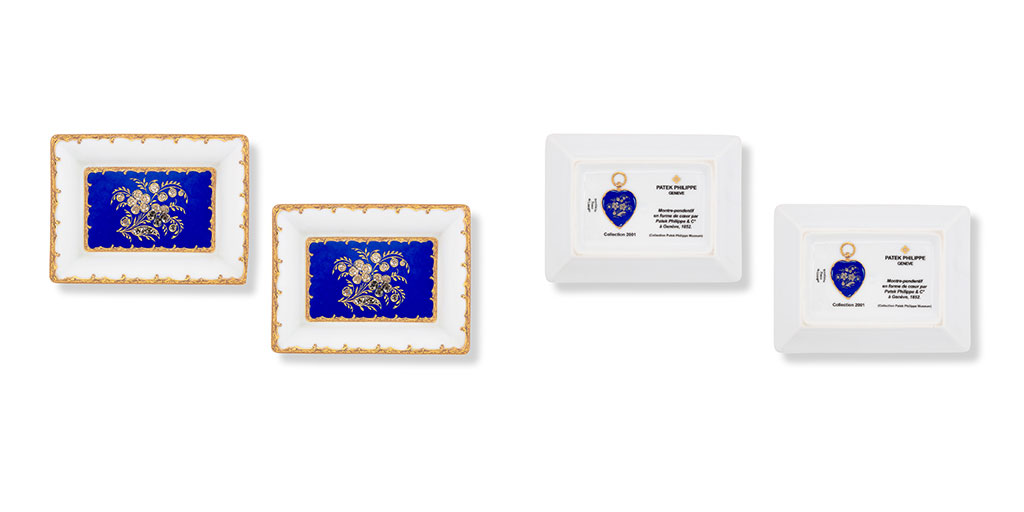
Have you ever wondered when and how the tradition began? Here for the first time is the story, shared by Collectability’s dear friend Pamela Cloutier who worked for Patek Philippe when they were launched. As those of you who have listened to Tania Edwards’ podcast with Pamela Cloutier know, during the 1990s, Pamela was privileged to work very closely with then-president, Philippe Stern. Always on the look-out for creative gifts for clients, Pamela had the idea to create something in porcelain, decorated with a Patek Philippe watch. The inspiration came from her friend, Catherine Bouvier, a talented decorative artist working mostly on porcelain, who had asked to borrow Pamela’s Patek Philippe books as she wanted to paint exquisite watches. Pamela lent her copies of Huber & Banbery volumes I and II and the Caliber 89 book for ideas.
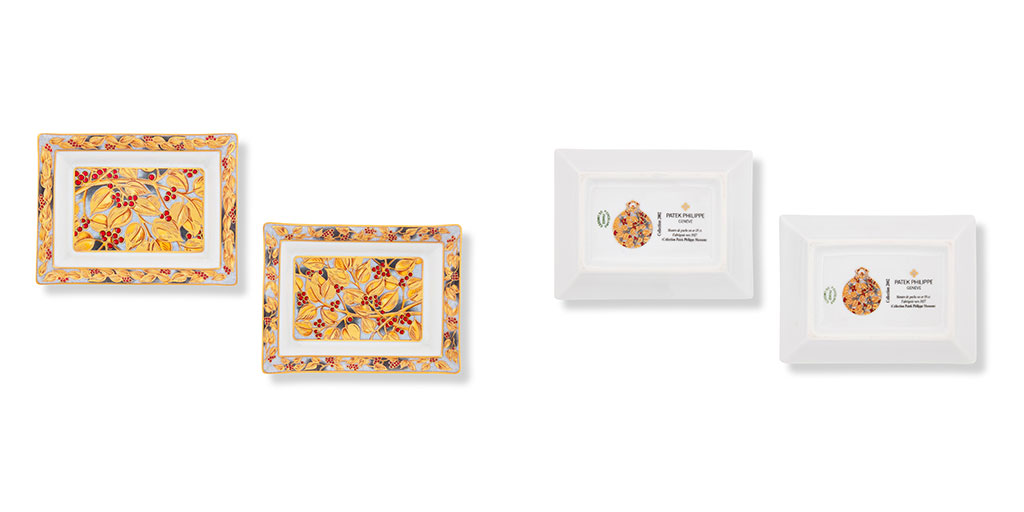
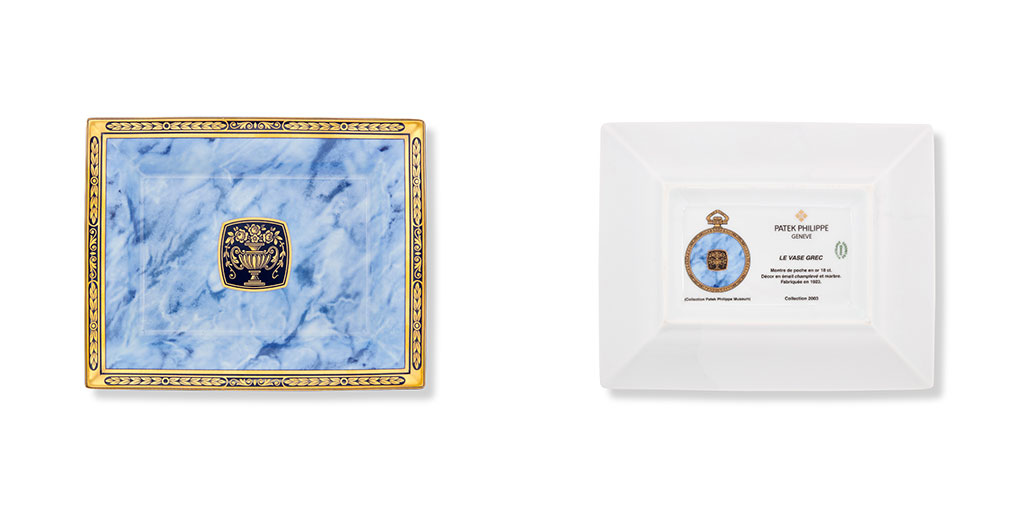


Catherine’s grandfather was a watchmaker in the Neuchâtel region, where her family are from, and she grew up with the sound of chiming clocks in her home. She had always been connected to the world of watchmaking and admired the heritage of the craft (she wears her Patek Philippe Twenty~4 everyday!) Initially, Catherine planned to decorate a set of tableware, Pamela asked to also try to paint watches on smaller pieces of porcelain which could potentially be given as VIP gifts. So, in 1995, Catherine produced some small, porcelain examples such as boxes, ashtrays and a rectangular plate, each produced by Limoges, her preferred porcelain manufacturer.
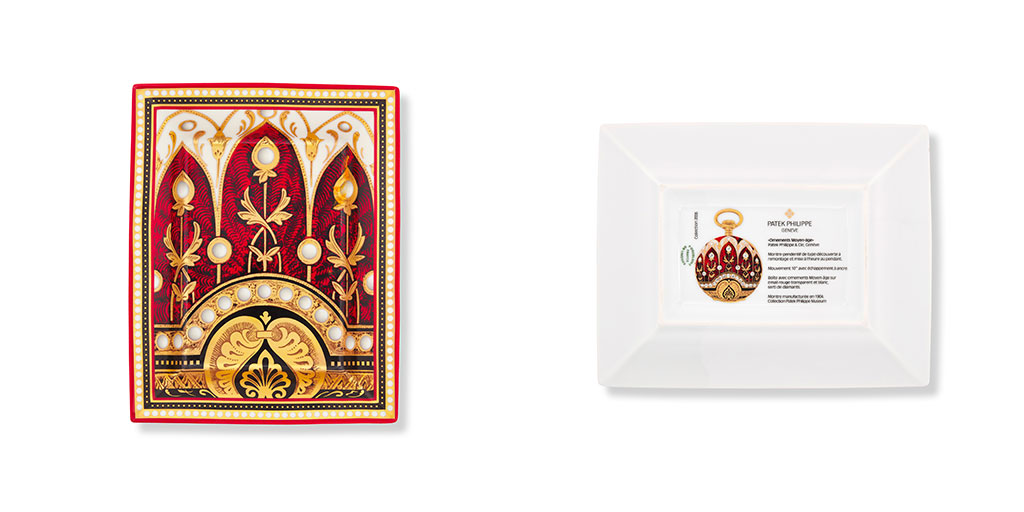
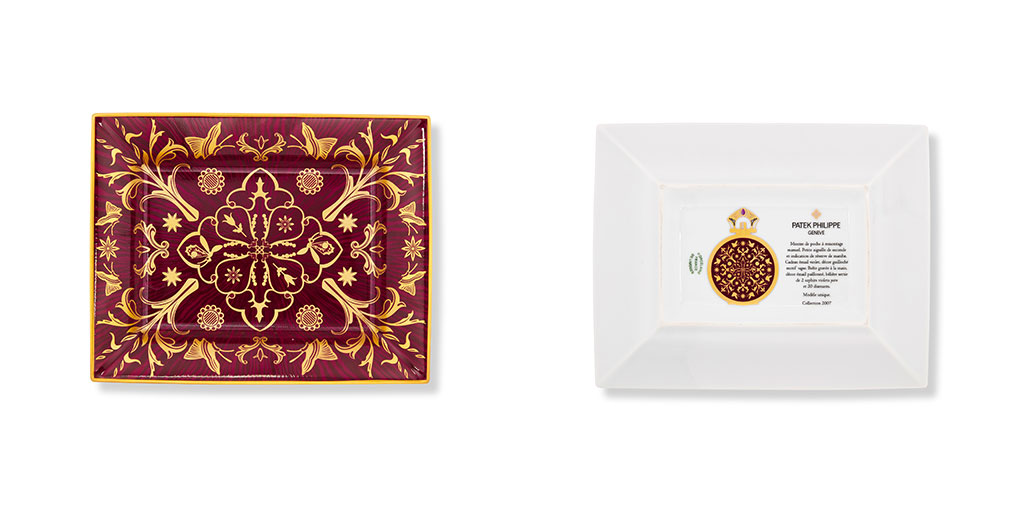
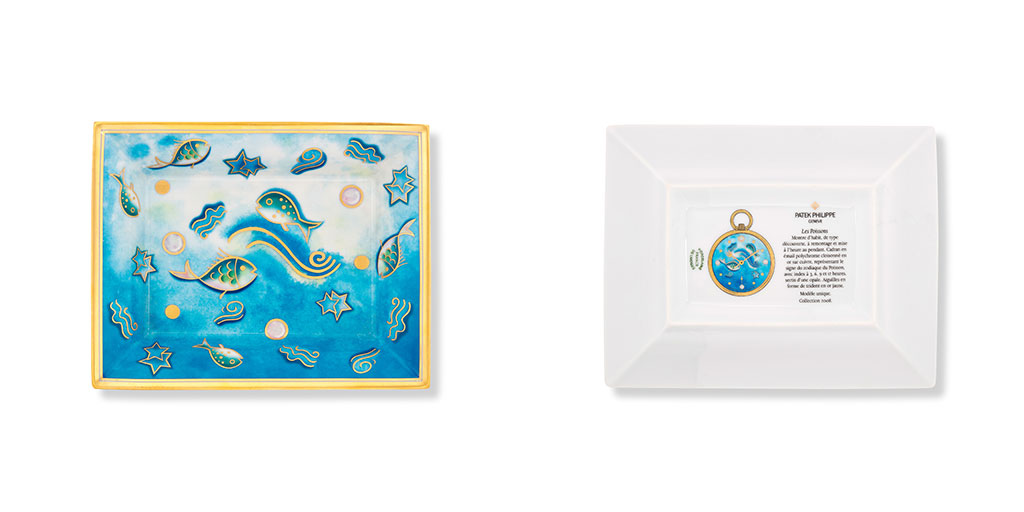
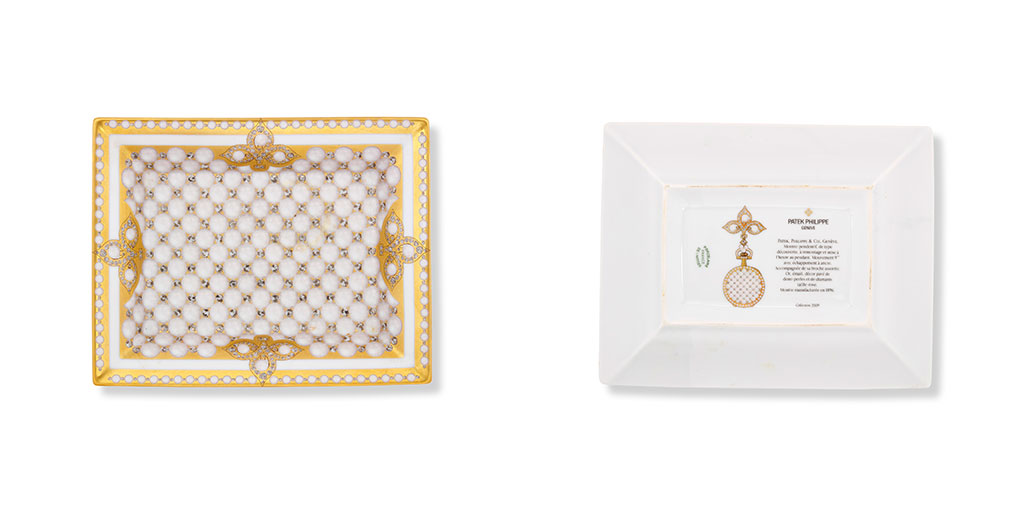
Pamela Cloutier was so pleased with the samples that she presented them to Philippe Stern who immediately loved the idea, and the decision was made to also work with the esteemed French porcelain maker, Limoges. As Philippe Stern was busy working on the building of his museum to house his extraordinary timepiece collection, it made sense to select watches from the Patek Philippe Museum.
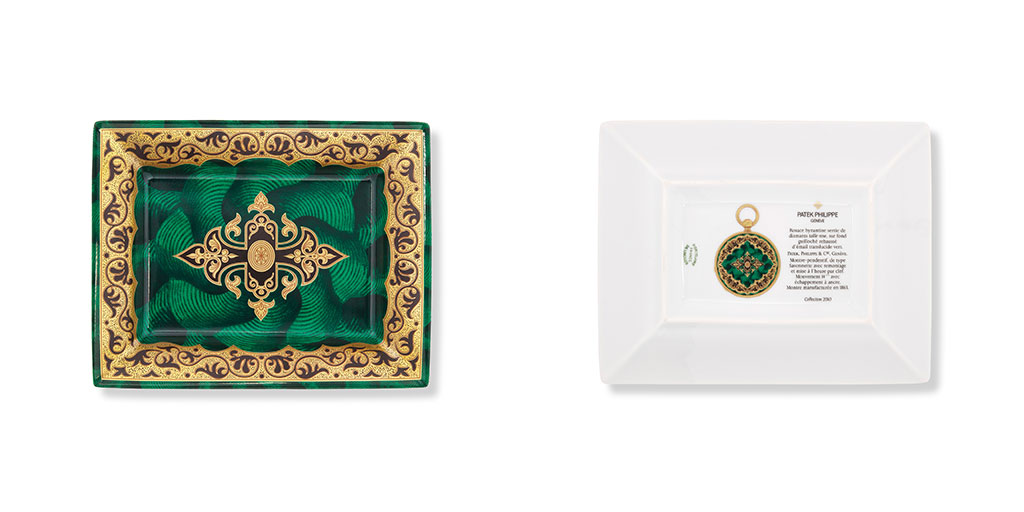

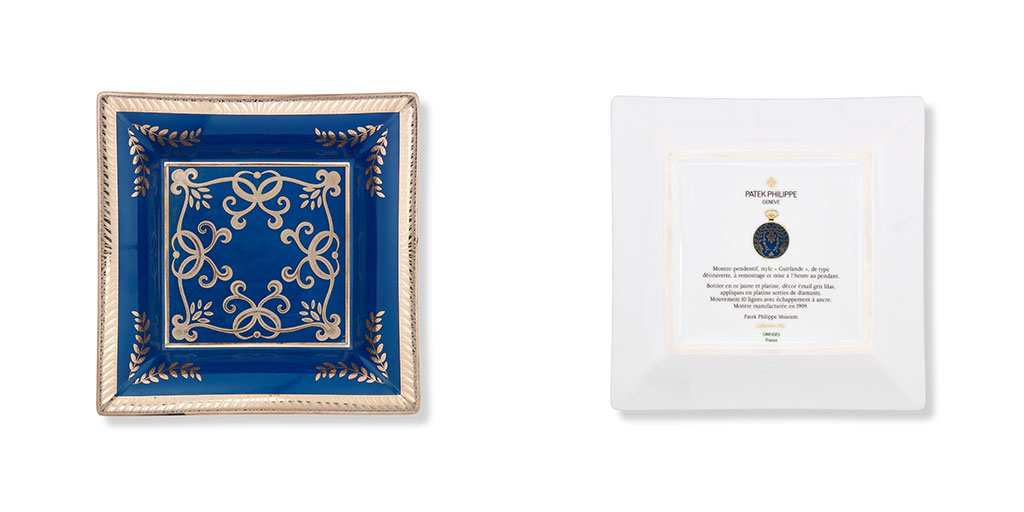
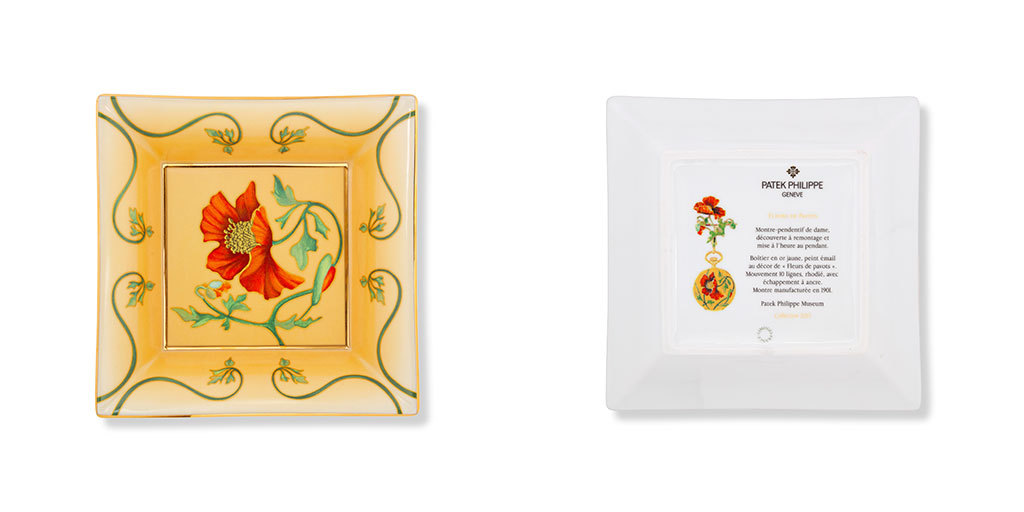
Starting in 1997, the initial shape for the dishes was the rectangular or square vide-poches which literally means ‘empty pockets’ meaning a dish into which you can empty your pockets when you return home. Occasionally, different shapes would be selected such as a box with a lid in the year 2000, or a pair of smaller rectangular dishes such as in 2001 and 2002. There was also a very limited collection of ashtrays made in the late 1990s and early 2000s. Both Philippe Stern and his father Henri Stern had one on their desk. An ashtray has never come onto the market for sale, so presumably, they were VVIP gifts – let us know if you own one! Fortunately, we have managed to find two ashtrays which the owner was kind enough to photograph for us below:
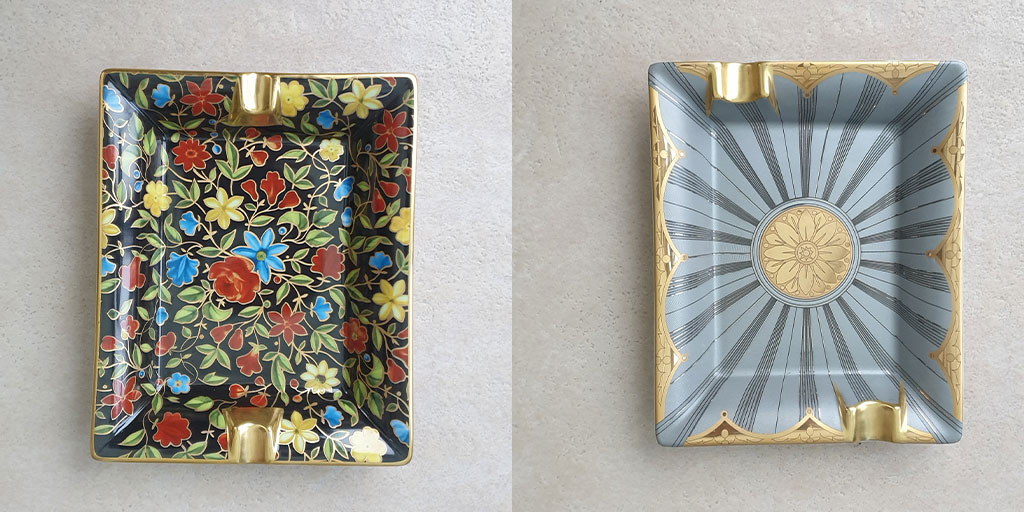
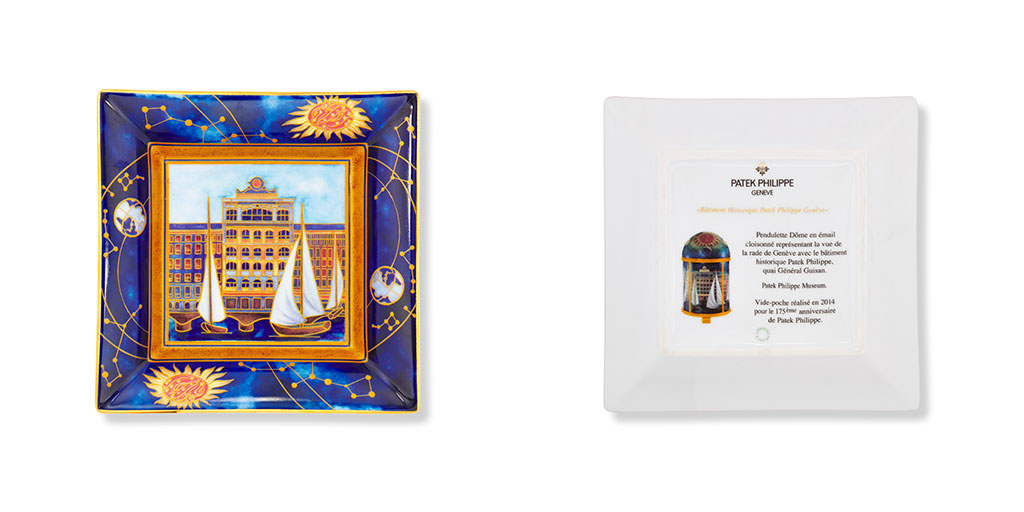
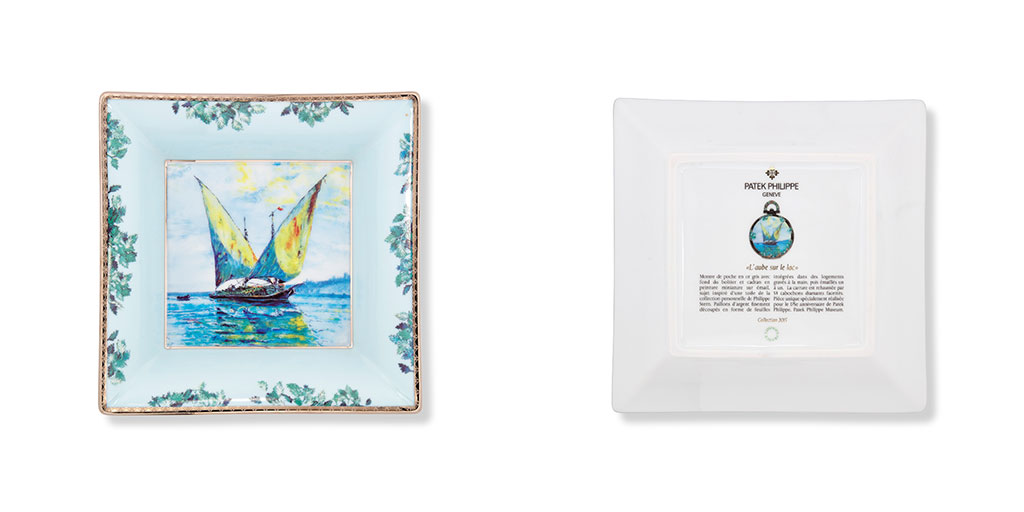
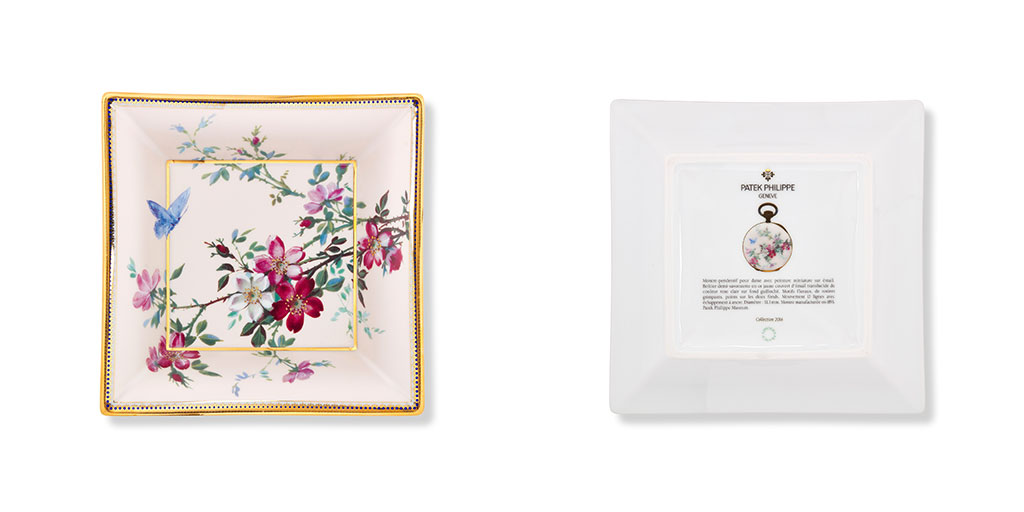
A treasured gift that Tania Edwards received in the summer of 1997 was a Limoges dish decorated with a Patek Philippe pendant watch that belonged to Queen Victoria. Pamela commissioned Catherine to make the dish commemorate the christening of Tania’s first child. The design of the dish was based on one of the early samples Catherine produced as she was inspired by the beauty of the Queen Victoria piece (see below).
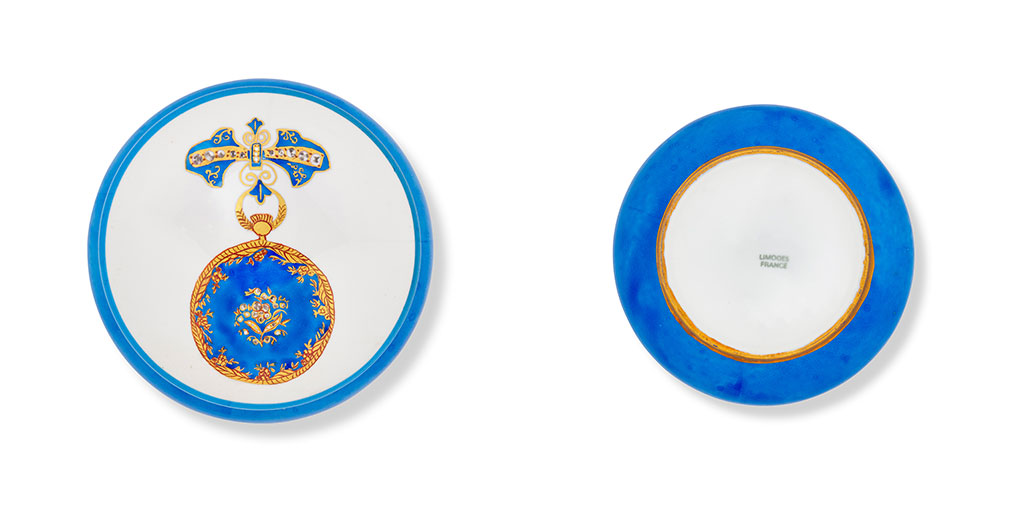

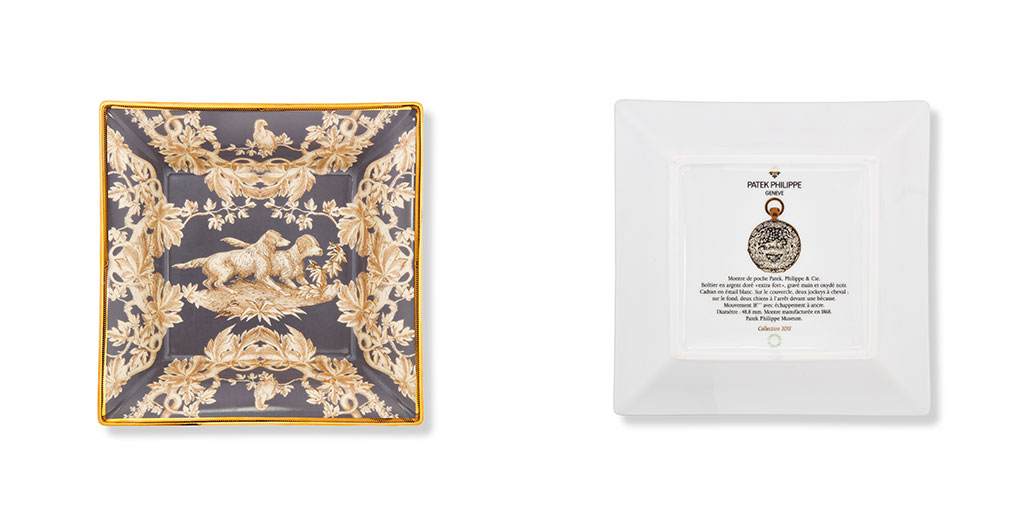
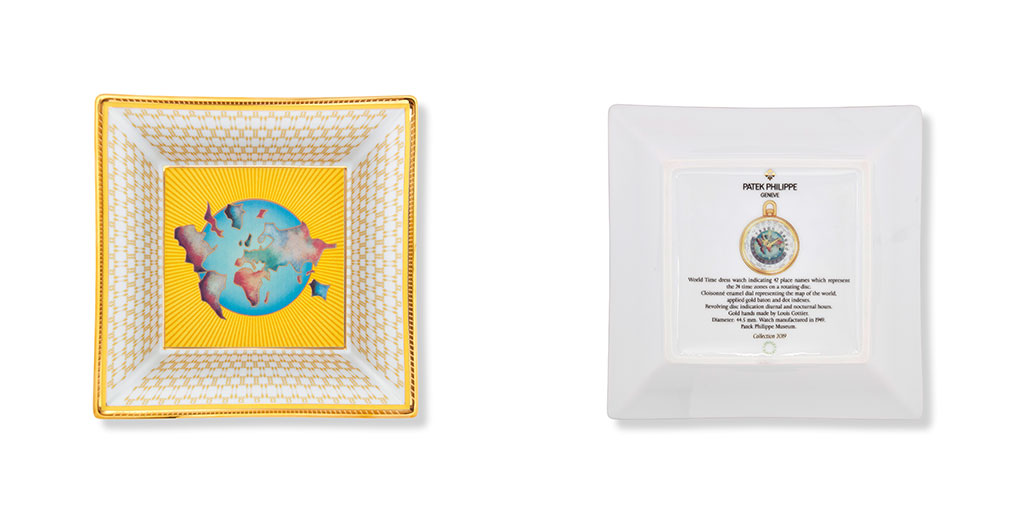
For many years, Philippe Stern would select which watch he wanted to feature on each dish. The curator of the Museum would then write the description which was painted on the back of the dish. It is assumed that Thierry Stern now decides which Patek Philippe to feature on each dish and they are not always vintage pieces. For example, in 2014, a cloisonné enamel clock made for the 175th Anniversary of Patek Philippe was selected, and in 2023, a Rare Handcrafts pocket watch featuring zebras produced a stunning modern version.
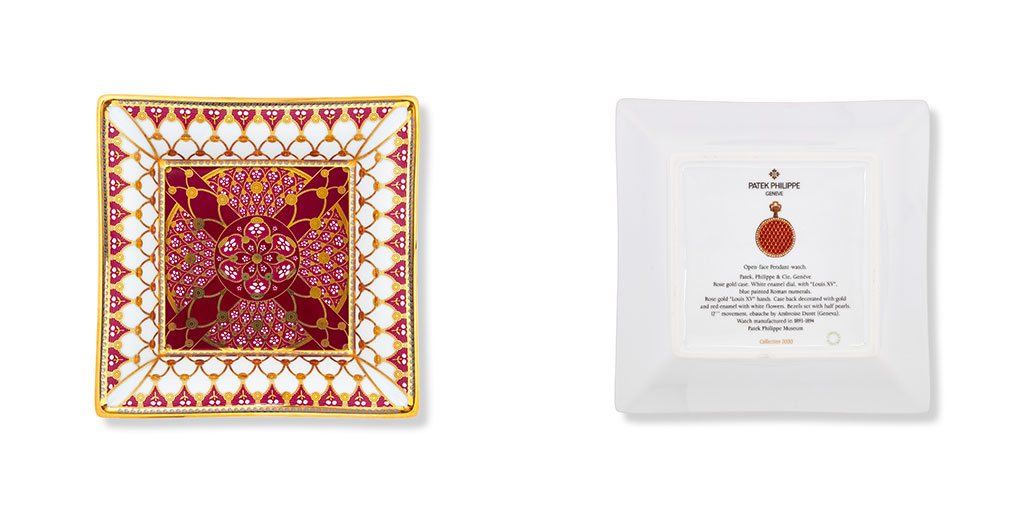
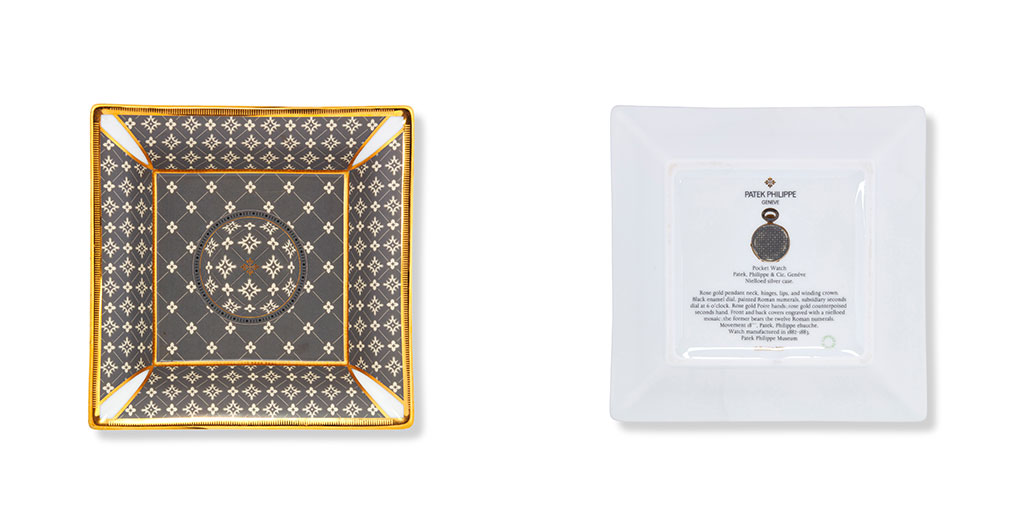
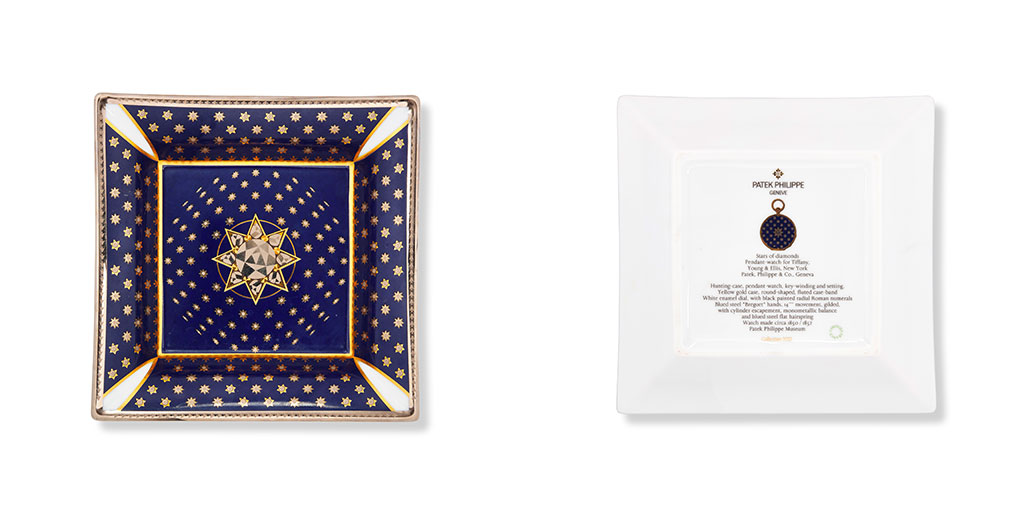
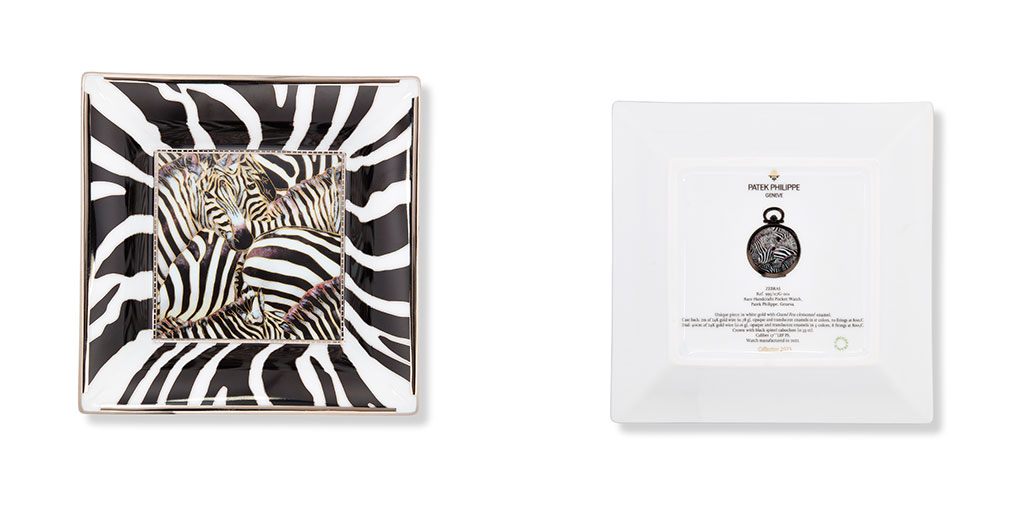
Each year, the Patek Philippe Holiday card would feature the timepiece selected for the porcelain dish. Even if a person was not privileged to receive the dish, the card was a beautiful alternative – and reminder of over 185 years of Patek Philippe’s production.

Staying on the theme of dishes, Collectability’s founder John Reardon found something truly extraordinary at an auction in France earlier this year – an almost complete dinner service made for the wedding of Antoine de Patek’s son! In 1883, Patek’s son Leon Vincent Miecislas de Patek — born in 1857 and who was made a silent partner of Patek Philippe in 1878 a year after his father died in 1877 — married a French lady in Chambery, about 55 miles from Geneva. The wedding service was made by Gien, a French company specializing in traditional, hand-painted fine china. Each plate and piece of the extensive service was decorated with a coat of arms which combined the Patek family with that of Eugénie Charrost de la Chavanne. Patek himself would sadly have not attended the wedding, however, as a devout Catholic he would have been happy to know that his son married a Catholic girl from France. This dinner service is a testament to the fact that you never know what treasure relating to the history of Patek Philippe that you might find!



